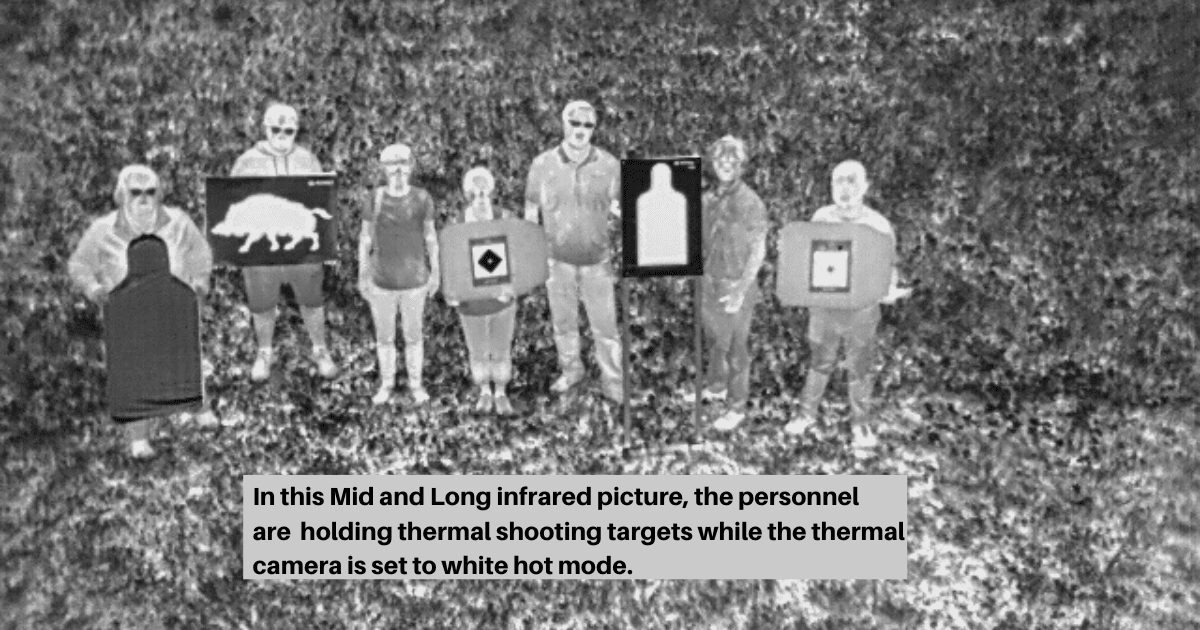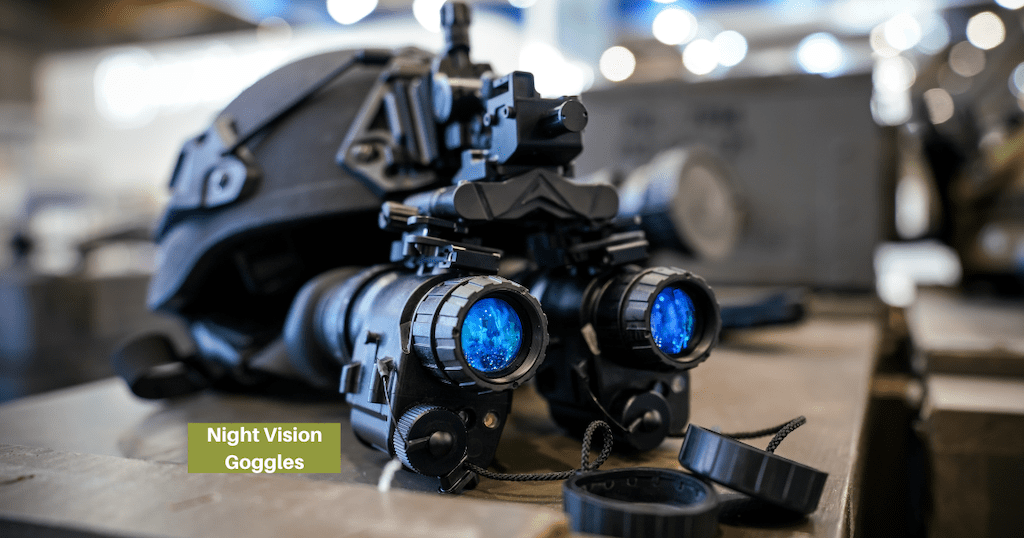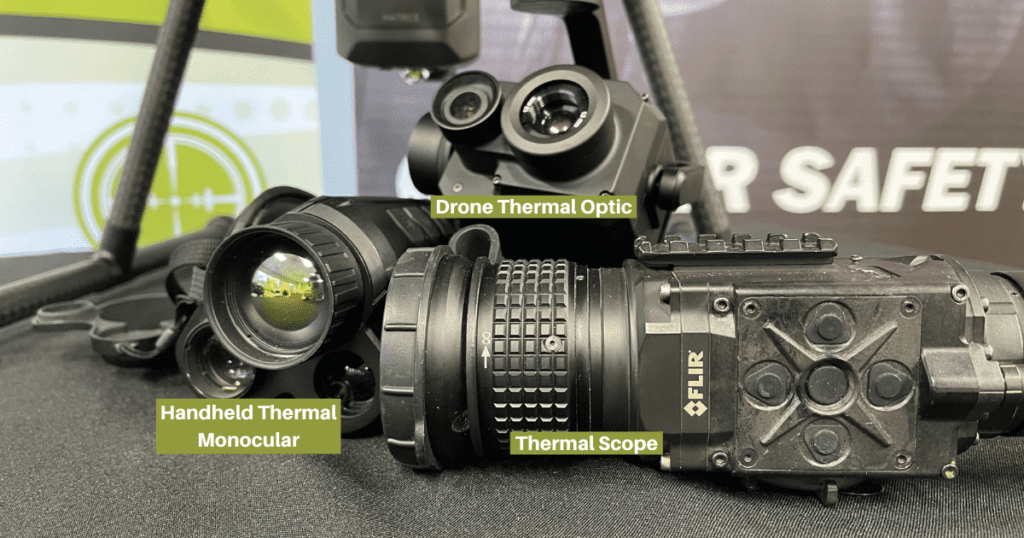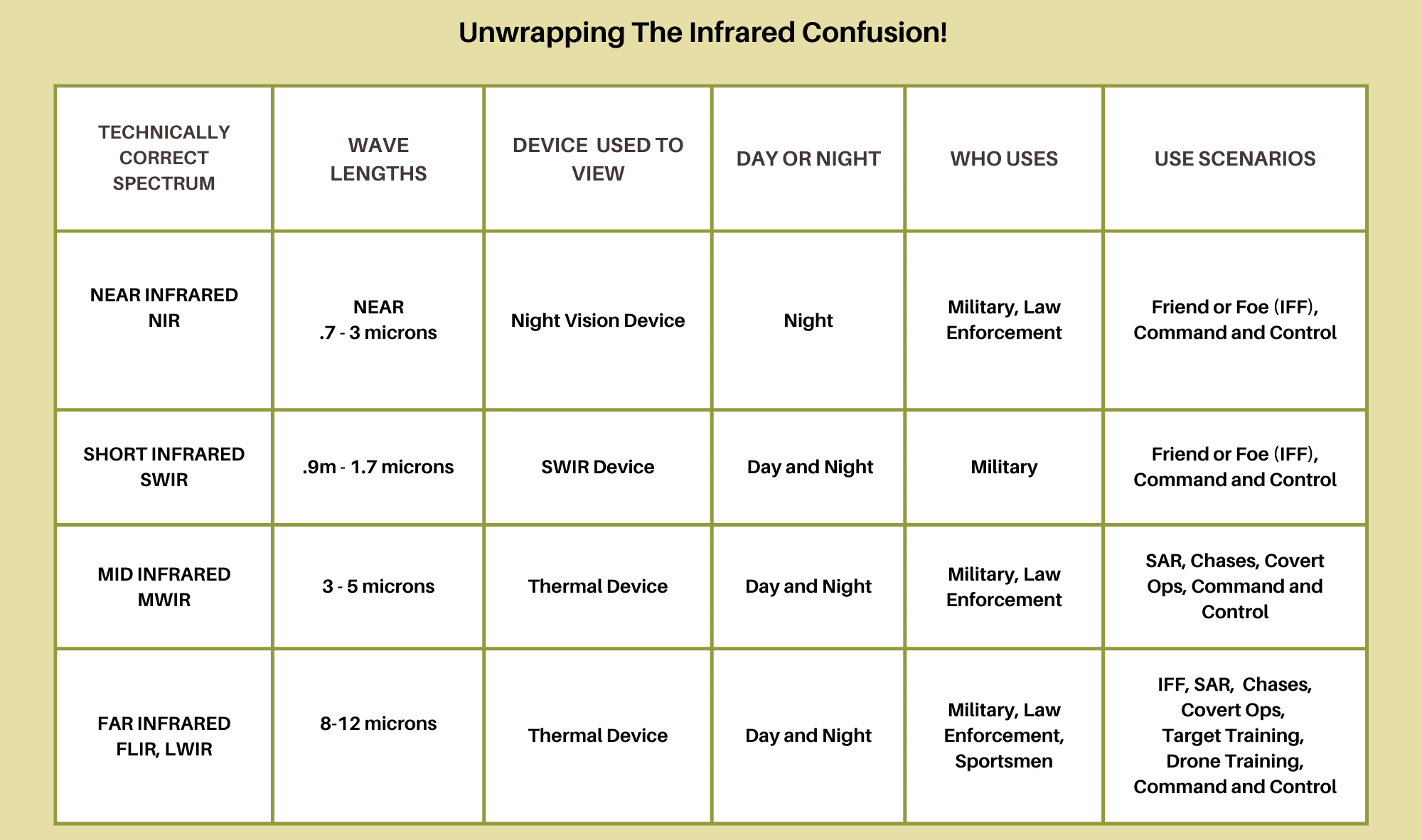
Why take this lesson?
In this learning path, we aim to teach you the basic infrared terminology and the basic functions of each.
IR’s Beginning: Near, Mid and Far
Years ago, the military issued night vision goggles (NVG) to its soldiers. The goggles were designed to be sensitive to near-infrared energy, which led to them being referred to as “IR” goggles. At this time the military’s only focus was near-infrared energy so that worked fine.
Eventually, thermal devices became a vital part of the operations. The term “IR device” could refer to near-infrared or mid and far infrared. Each of these infrared energies operates on different wavelengths, are seen by different devices, and play different roles. Without more clarification, it was unclear which infrared energy was at work. Thus began the confusion.
Terminology:
Infrared: Infrared radiation (IR), or infrared light, is a type of radiant energy that’s invisible to human eyes but that we can feel as heat. All objects in the universe emit some level of infrared radiation.
Electromagnetic Spectrum: The range of all types of radiation. Radiation is energy that travels and spreads out as it goes – the visible light that comes from a lamp in your house and the invisible radio waves that come from a radio station are two types of electromagnetic radiation.
The entire electromagnetic spectrum and the devices to view it are all commonly called “IR” or “infrared”. While “IR” is not wrong, it may not be technically correct.
Correct technical terms:
- Near Infrared: NIR
- Short-wave Infrared: SWIR
- Mid-wave Infrared: MWIR
- Far-wave Infrared: LWIR or FLIR – long or far wavelengths
- Thermal Infrared: The mid and far infrared energy
- Night Vision Device: A device used to view near-infrared energy, commonly called NVGs or NVDs.
- Thermal Device: A device used to view mid or far-infrared energy.
What is Near Infrared Energy?
Near-infrared energy (NIR) behaves more like visible red light except that you can’t see it with the naked eye. It has wavelengths just beyond the visible light range. While we can’t see it, we can often feel it as heat. Practically speaking NIR radiation is most familiar to us in our day-to-day activities. There are LEDs (your TV remote control) and LASERs that emit near-infrared. Near-infrared is used EXTENSIVELY in fiber optic communications and medical imaging as well as NIR heaters, and saunas. Most likely, the data for you to read this was sent to you as tiny pulses of near-infrared energy.
What is Short Infrared Energy?
Short infrared energy (SWIR) is a kissing cousin to NIR energy and sometimes these spectrums are even classified together even though a different device is used to view each of them. “Short” refers to a shorter wavelength than NIR which means it is more often used for surface imaging. In addition, SWIR offers more details in a scene than MWIR and LWIR. Its ability to operate in day and night conditions, fog, and smoke, makes SWIR devices valuable for military operations.
What about Mid and Far Infrared?
Mid and far infrared are similar to each other, but very different from near-infrared and visible energy. Neither are visible to the naked eye. The warmth you feel when you stand next to a wood stove or radiator is comprised of mid and far infrared. All objects in the world are continually giving off and receiving mid and far infrared. If I am near a wall, I will radiate energy in the form of mid and far infrared to the wall and the wall will do the same to me.
The image below shows a bird’s eye view of mid and far-infrared heat contrast. The thermal camera in a white-hot setting distinctly displays the differential of the people, ground, and the thermal targets they are holding.

Devices Used to View Infrared Energy
Many devices are used to detect infrared energy. The Military, Law Enforcement, and Sportsmen primarily use Night Vision and Thermal devices. Not to ignore the many other devices that operate with infrared, these Learning Center lessons will focus on Night Vision and Thermals and how they relate to the NIR and LWIR films. Keep in mind, while infrared devices are incredible for detecting the IR energy in a scene, they will not provide the finer details in that scene to determine who is who. As you can see in the above picture, the facial features of the people are undetectable.

Night Vision Devices
A night vision device detects and identifies “near-infrared wavelengths,” in the dark. What this means is that objects and people you can’t see in the dark are visible to your eye through the night vision device. The more widely used green phosphorus Night Vision device will show the scene in a green color with moderate details. Any existing ambient lights in the scene will bloom large and bright. The new White Phosphorus near-infrared devices do not have a green tone but appear more black and white for a bit more clarity.

Thermal Devices
A thermal device detects and identifies “long infrared wavelengths,” in daylight and darkness. What this means is that the heat from objects (people, animals, vehicles) will stand out from the rest of the environment. This is particularly helpful for search and rescue, suspect chases, and boar hunting. A thermal device has a selection of color palettes to choose from, so depending on the chosen palette, the colors on the scene will vary. Most Military and Law Enforcement operations use White and Black hot palette settings.

Thanks for taking the time to learn the basic parts of the infrared spectrum. The aim is to help you understand the fundamental ideas. There is a lot more to explore in each area covered, but I wanted to start with the simplest version first.
Everything IR.Tools builds is related to the spectrum in some manner, and we will explore this through each lesson.
Continue your learning by moving on to the next lesson: Choosing the Right IFF Protection
